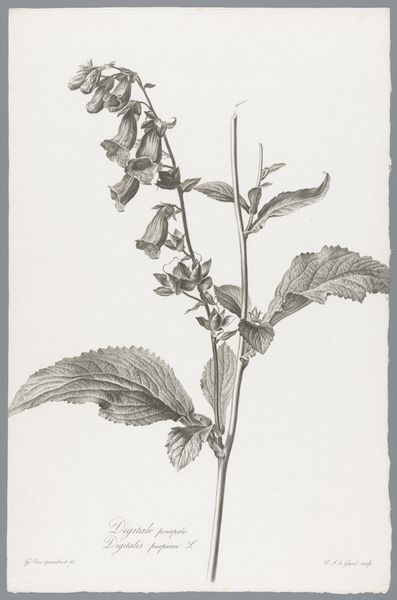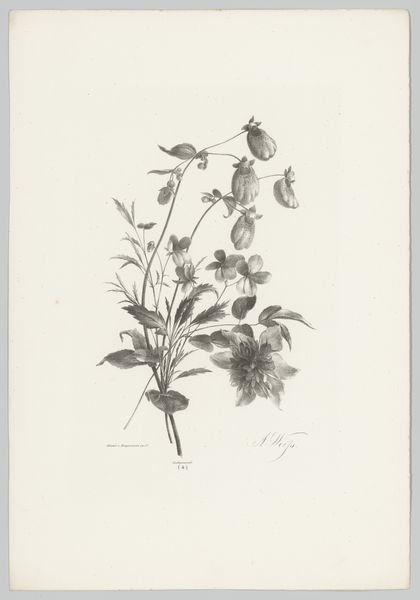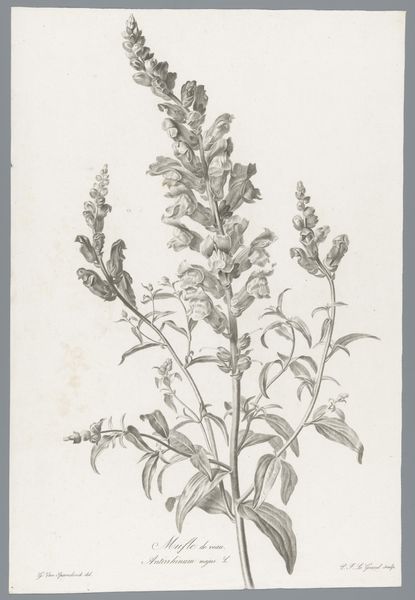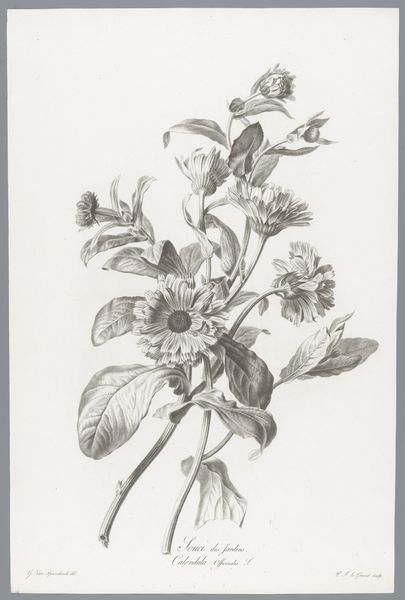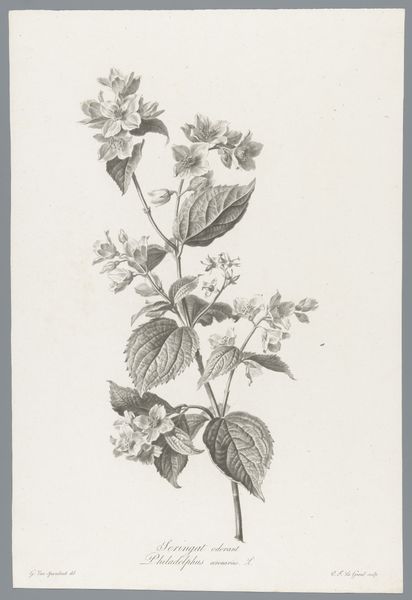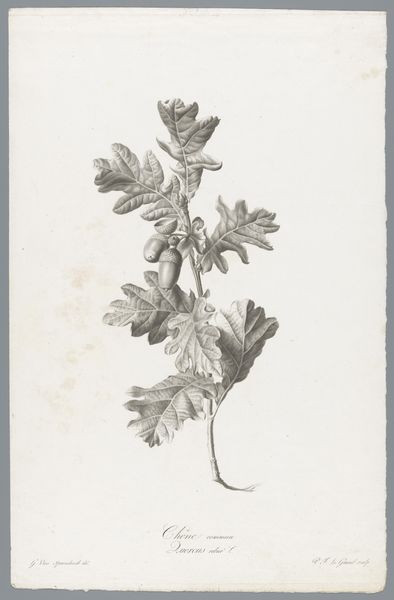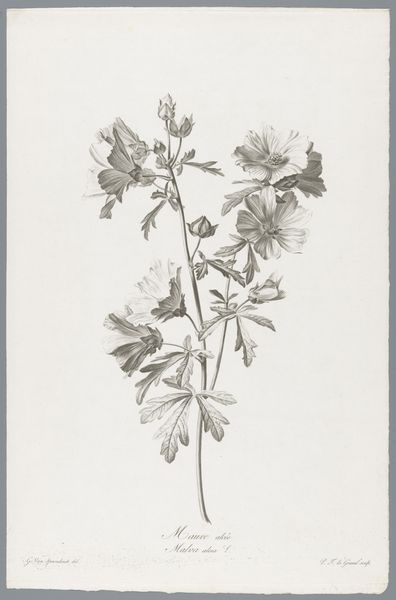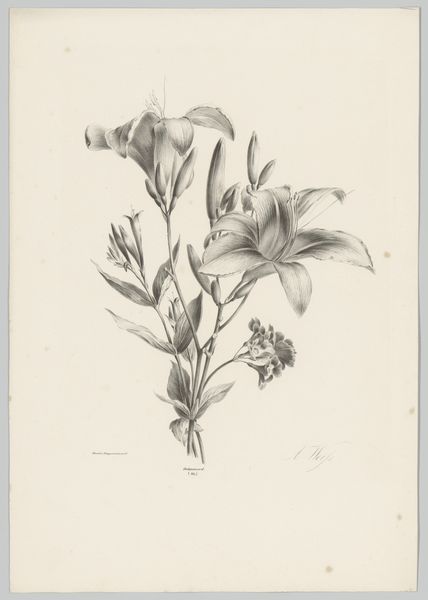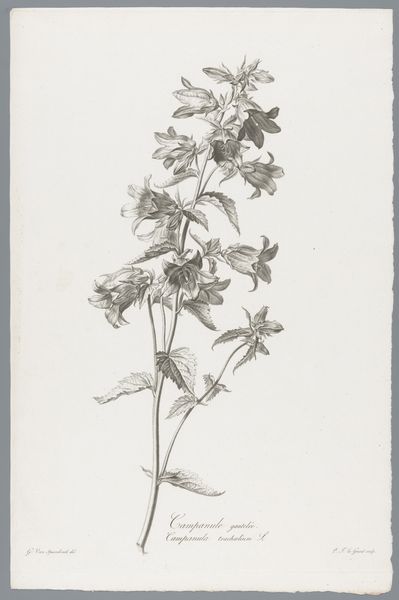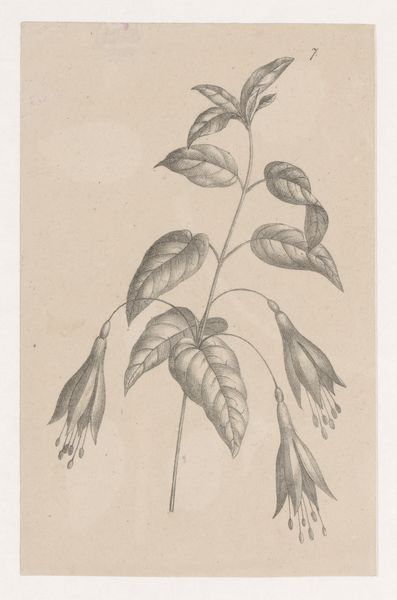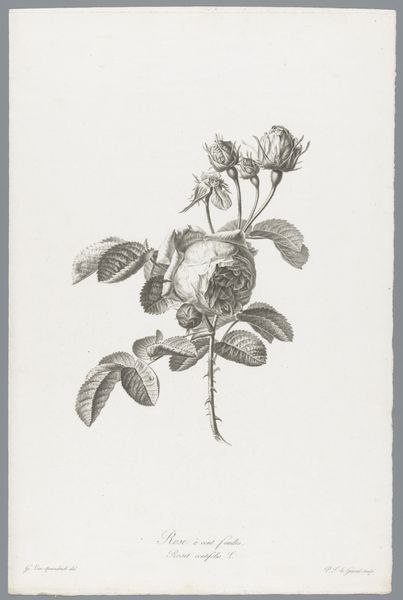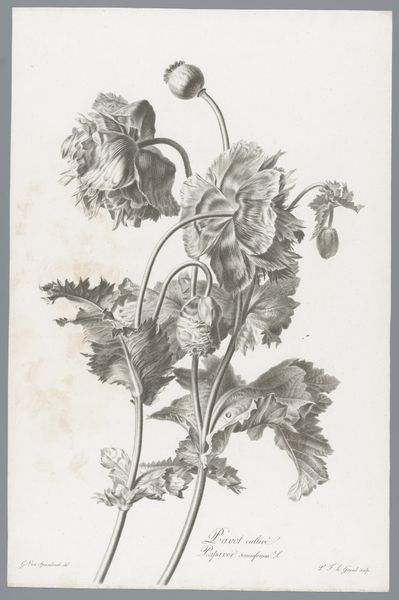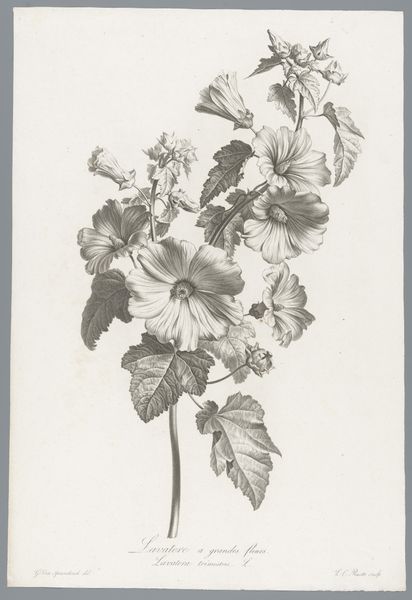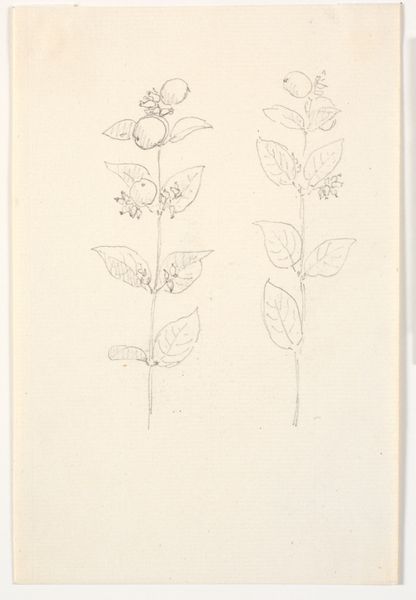
drawing, paper, pencil
#
drawing
#
pencil sketch
#
flower
#
paper
#
pencil
#
academic-art
#
realism
Dimensions: height 495 mm, width 335 mm
Copyright: Rijks Museum: Open Domain
Editor: This botanical drawing, titled "Gewone salomonszegel," was made with pencil on paper sometime between 1799 and 1801 by Pierre François Legrand. It feels quite precise, almost clinical in its detail. What do you see in this piece, especially given its historical context? Curator: This meticulous drawing, for me, resonates deeply with the late Enlightenment's project of categorizing and understanding the natural world through a scientific lens. But beyond mere representation, botanical illustrations like this one were implicated in colonial endeavors. The plant specimens were often collected from colonized lands, and the knowledge produced through these drawings contributed to European power. Consider the power dynamics inherent in naming and classifying a species. Do you think this image acknowledges or obscures those power dynamics? Editor: I hadn't thought about the colonial aspect. The scientific impulse seems so pure on the surface, but you're right, there’s a clear relationship to power there. Is there a way to reclaim or re-contextualize botanical art to challenge those earlier associations? Curator: Absolutely. Contemporary artists are engaging with historical botanical illustrations in critical ways, interrogating their colonial legacy and using them to explore themes of environmental justice, indigenous knowledge, and the politics of representation. These historical images are not just pretty pictures but potent reminders of the intertwined histories of science, colonialism, and power. Does seeing it this way alter your initial impression? Editor: It certainly does. I see it now as much more complex, a document with a loaded history. Thanks for making me aware of this important perspective! Curator: My pleasure! Recognizing the social and political forces at play in the creation and interpretation of art opens up exciting avenues for understanding both the past and the present.
Comments
No comments
Be the first to comment and join the conversation on the ultimate creative platform.
